|
|
Post by chasensfo on Feb 9, 2018 19:40:03 GMT -5
The 1998 project is coming along well, however, it's release is dependent on much more than flightplans, namely repaints and scenery/AFCAD files and the conversion of AI models to work in P3Dv4 as it is a "modern" sim project. However, I would like to extend completed flightplans to you guys as they come along. Most of you use FS2004, and most paints for this project are available if you dig around the web. For those wishing to do manual install, I will upload plans to my Google Drive as whole airlines are completed. That way you can at least get them in your personal sims if you wish. Now as referenced in the other thread, I have taken a bit of an "odd" approach with this project, completing countries in certain geographical areas of the world(namely Northeast Asia and the USA Pacific Northwest for now). This means that most airlines will not be complete for "a while". However, I do plan on completing airlines based in the project country in their entirety as part of the project. Right now, this means airlines based in Japan, Taiwan, North/South Korea, Macau, and Hong Kong will be completed first. When I move on to finish the Pac NW USA(Washington, Oregon, Idaho), for example, I will finish Alaska and Horizon as part of that project area. All files will be located in my box file here: Google DriveThe "Incomplete Airlines" file contains all OAG and most cargo flights to Japan, Hong Kong, Macau, North Korea, South Korea, Taiwan, and the Philippines operated by airlines that have not been completed 100% in the course of this project. With these files, all flights to the project countries will at least be included in your simulator, while most of the flights these airlines operate outside the project areas are not included. Check here for updates: (15SEP2020 last update); removed several recently released airlines. Please replace your flightplan file with this new one and you should be fine, just with some un-used aircraft but still able to compile. Otherwise there will be many duplicates due to recent releases). Download Incomplete Airlines 1998 HereThe purpose of this thread is so that the plans are easy to find in one place instead of in the congested project thread, and for feedback. I've done a lot of research into these plans and they are as accurate as possible, while also ran through AIFP to make sure they are error free. However, if you see something standing out as inaccurate or very unrealistic, or if you have an idea for what to add, please let me know. I have made a video tutorial about manually installing these flightplans: Upcoming Airlines: Frontier Airlines 1998 - Completed and uploaded in Google Drive, will be formally released when fleet repaints are complete SAS + Commuters 1998 - Final stages Hemus Air 1998 - Working on charters China Northwest Airlines 1998 - Final Stages China Yunnan Airlines 1998 - Final Stages Air Canada Commuters - Final Stages Canadian Commuters - Final Stages Royal Aviation - Final Stages Gulf Air - Final Stages Nature Air- Final Stages Air Sunshine- Final Stages VARIG LOG- Final Stages Tropic Air- Final Stages ALTA Asociados Latinoamericanos De Transporte- Final Stages Gulfstream International Airlines- Final Stages Island Express- Final Stages SkyKing Airways- Final Stages Turks & Caicos Airways- Final Stages IAG - Interlease Aviation Group 1998 - In Porgress Spanair 1998 - Nearing completion Brazilian Air Force 1998 - Nearing completion HeavyLift Cargo Airlines 1998 - In Progress Casino Express 1998 - In progress China United Airlines 1998 - In Progress Lastly, you can follow the project progress at the facebook page here: Flight Simulator 1998 ProjectEnjoy! -Chasen
|
|
|
|
Post by chasensfo on Feb 9, 2018 19:58:26 GMT -5
//Air Koryo 1998 Air Koryo (1955 - Present) IATA: JS ICAO: KOR CALLSIGN: AIR KORYO Air Koryo is the infamous state-owned national carrier of North Korea based in Pyongyang(FNJ). In 1998, the airline operated almost entirely on a charter only basis with very few scheduled routes, and it was the first year that Air Koryo appeared in the OAG and major travel agencies' computers. The only scheduled routes were Moscow(SVO), Berlin(SXF) via Prague(PRG), Bangkok(DMK) via Macau(MFM), and Beijing(PEK) and most were operated 1-2x weekly with the exception of PEK. The rest of Air Koryo's routes, including all domestic flights, were sporadic and on a charter basis and only offered to wealthy North Korean nationals(as they were not likely to defect to other nations) as ways to take shopping trips abroad. The charter network was vast, but many of the flights were only operated once or twice. Accordingly, the vast majority of these flightplans are representative, but based on real data of what routes the airline was flying in the late 90s. The vast majority of airports in North Korea do not have IATA/IACO codes, so I had to create some myself. Air Koryo's fleet operated sporadically, often planes sat days at a time idle, and when they did fly, it was usually a single round trip for the day. Pyongyang will often be flooded with aircraft, while "busier" domestic airports will have a few planes on the ground here and there as well. I have created little traffic banks, where 0800-1000 each day will see most of the departures for the week at FNJ, and a few arrivals. The rest of the day is rather sporadic, but there are periods here and there with multiple movements. Longhaul flights were often operated by IL-62s, while Tu-154As and Tu-154B-2s flew most of the regional routes in Asia and into Russia and the IL-18s and An-24s mostly flew domestically. The IL-76 fleet was operated as Air Koryo Cargo, and very rarely flew domestically. These aircraft can mostly be found in Eastern China and Russia when not sitting around FNJ. A good scenery for FNJ is on Avsim as "zkpy_v1.0.zip" and a package with many missing airports used in these flightplans is on Avsim as "northkoreanairports.zip". They are designed for FSX but work with minor tweaking in P3Dv4/5. The paints are all completed: RATS IL-76: Avsim as "air_koryo_il-76md.zip" TCAI IL-62: Avsim as "tcai_il62md30_kor_circa2000.zip" SKJ Tu-154, CIS An-24, MRAI Tu-134, SKJ IL-62, SKJ IL-76: On flightsim.com as "kornkaft.zip" TCAI Tu-154A\B: Included in this package by Christian Gold: drive.google.com/open?id=1q98igRT5d78PeR1bB4z1zXNixwditBRHScheduled Flights: 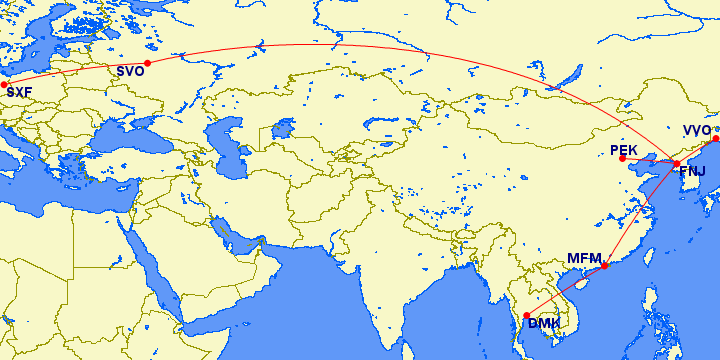 International Charter Flights: 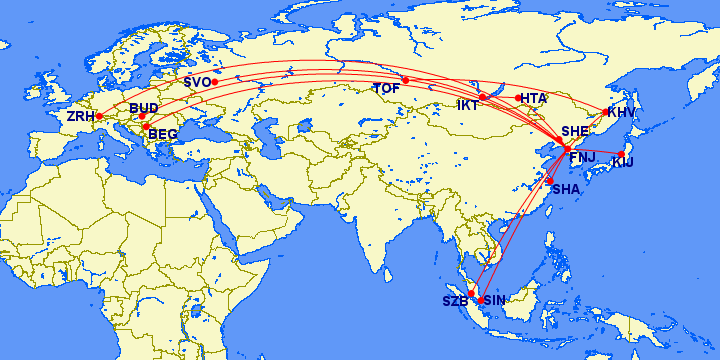 Domestic Charter Flights(note, these plans use several other airports that are not in the Great Circle Mapper database): 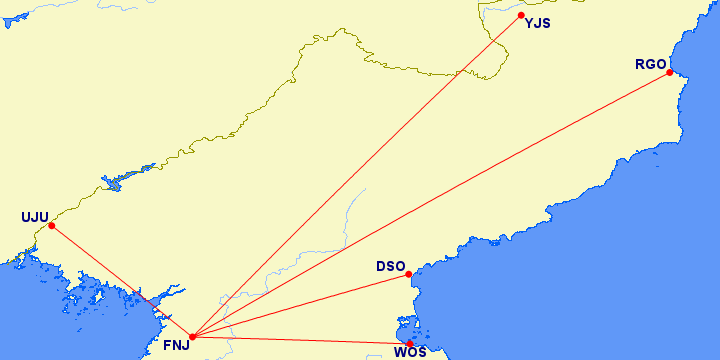 Download Air Koryo 1998 here Download Air Koryo 1998 here |
|
|
|
Post by chasensfo on Feb 9, 2018 20:22:19 GMT -5
//Air Macau 1998 Air Macau (1995 - Present) IATA: NX ICAO: AMU CALLSIGN: AIR MACAU Air Macau was still very new in 1998, they started in 1996 when the Macau Airport(MFM) opened. The airport became popular fast as an alternative to Kai Tak for connections between Mainland China and Taiwan, so most of Air Macau's flying was to cities in Taiwan and China. The fleet was all A320s and A321s in 1998, but if you wish to modify the plans, the 757 and A300 arrived within a few years and Christian Gold had those paints done. An A320 with a lot of idle time simulates a maintenance ferry flight Friday afternoon to nearby Hong Kong Kai Tak(HKG), where HAECO worked on the Air Macau fleet, and the plane sits there until Sunday evening when it flies home to Macau. Ranmori Scythe has painted the 1998 fleet including livery variations in the "Airlines_of_hong_kong_1998" file on Avsim. Scheduled Flights: 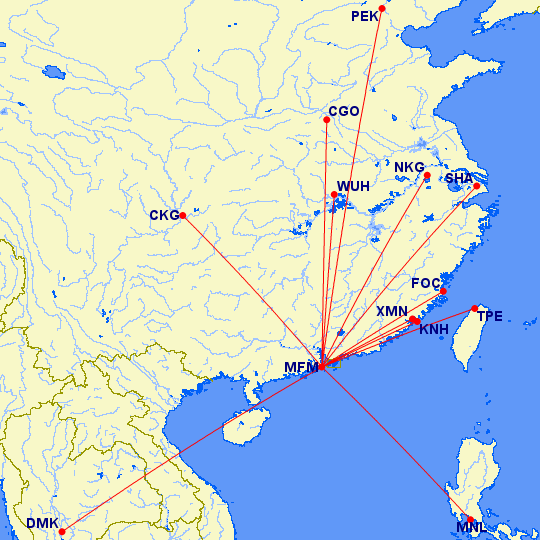 Maintenance ferry flight: 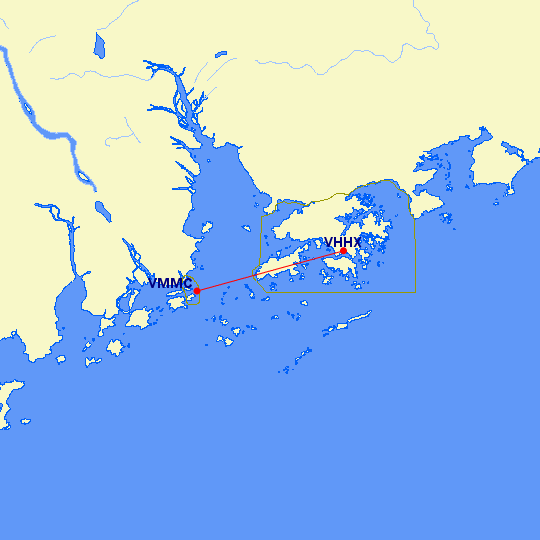 Air Macau 1998 Flightplans Air Macau 1998 Flightplans |
|
|
|
Post by chasensfo on Feb 9, 2018 21:08:34 GMT -5
//Air Philippines 1998 v2 Air Philippines (1995 - Present) IATA: 2P ICAO: AQP (later changed to GAP) CALLSIGN: ORIENT PACIFIC (later changed to AIRPHIL) Air Philippines was founded in 1995 based in Manila(MNL) as a low cost carrier focused on domestic routes, especially those on which Philippine Airlines had drastically scaled back service or eliminated. Air Philippines, much like Philippine Airlines, also came close to failure in 1998, but for different reasons. The Filipino Aviation Authorities closed down Air Philippines and the carrier was forced to scramble for new ownership. U-Land Airlines of Taiwan, Asia's first Low Cost Carrier, came to the rescue and flights resume, with the MD-80 joining the fleet. in 1998 During the independent history of Air Philippines, the 737-200 was the work-horse of the fleet, and 1998 was nearing the end of the carrier's us of other types. Air Philippines was operating several YS-11As in hybrid liveries of their previous Japanese owners, and had leased 737-300s and MD-80s. The 737-300 flew just one route; high frequency service between MNL and Davao (DVO). In addition to all scheduled flights, YS-11A charter flights to Subic Bay(SFS/RPLB) and Clark(CRK) were operated frequently due to lack of a direct highway between those cities at the time, and these flights have been represented. Air Philippines would adopt a new white livery with a blue tail in 2000, and would add international flights soon afterwards. Philippine Airlines took notice of the success of Air Philippines, and in 2008, Air Philippines began operating DHC-8-300s for Philippine Airlines as PAL Express in the full Philippine Airlines livery. The airline later changed it's name to AirPhil Express, and to this day is a wholly owned subsidiary of Philippine Airlines. The 737-200 is done on the AIA model on Avsim as "aia_732.zip", and I have done 3 of the 4 FSP YS-11 variations here: drive.google.com/drive/folders/1pMLnyyb-ccGYa3O8Th24qPQG00E-7fvy?usp=sharing. The rest of the fleet is in progress. YS-11A: 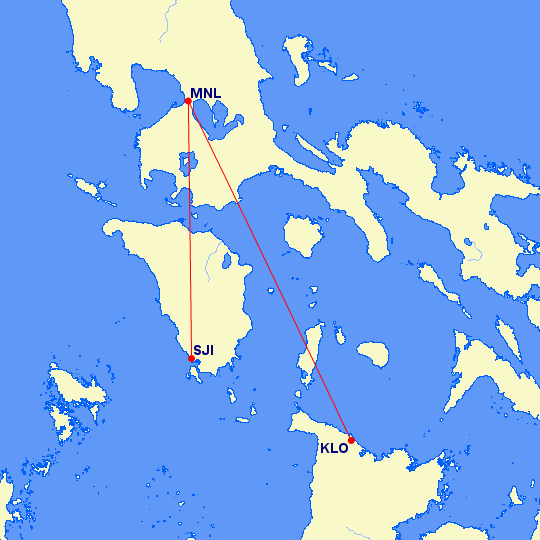 YS-11A Charter: 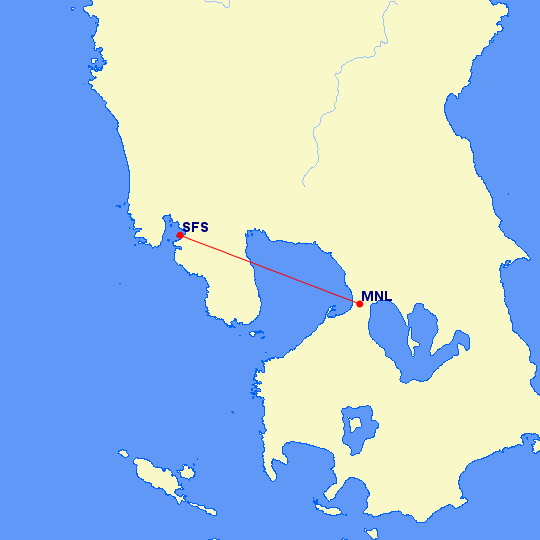 737-200: 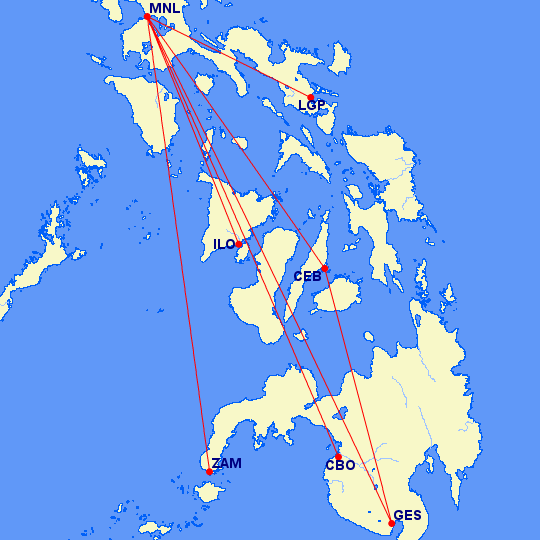 737-300: 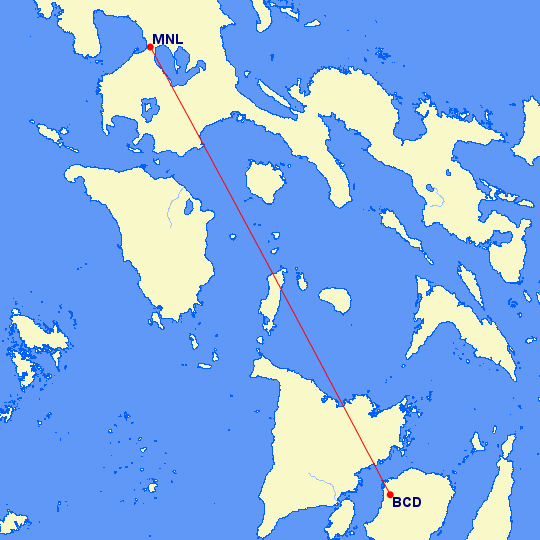 MD-80: 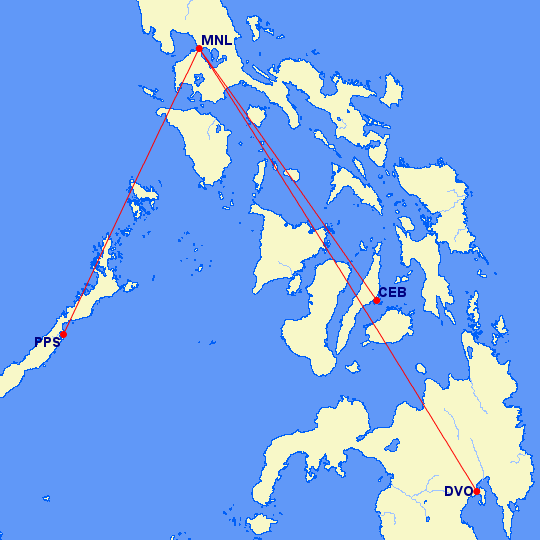 Air Philippines 1998 Version 2 Flightplans here Air Philippines 1998 Version 2 Flightplans here |
|
|
|
Post by chasensfo on Feb 9, 2018 21:32:36 GMT -5
//Mandarin Airlines 1998 v2 Mandarin Airlines (1991 - Present) IATA: AE ICAO: MDA CALLSIGN: MANDARIN Mandarin Airlines was a fully-owned affiliate of China Airlines based in RCTP. Today, Mandarin does mostly regional flying, but 1998 represented the final years of widebody operations for the carrier. The 747SPs were retired soon after, and the MD-11s and 747-400 gradually returned to China Airlines. Mandarin operated most of the US, Australian, European, and Middle Eastern flights for China Airlines in the 1990s, but these routes were mostly gone by 1998. Mandarin aircraft frequently swapped back and forth onto China Airlines routes and vice versa. As Mandarin had a small fleet, I elected to have Mandarin planes on Mandarin routes, but my China Airlines plans will also utilize Mandarin colors MD-11s on China Airlines routes. Swap out the aircraft as you see fit. Sadly, by 1998, the airline was not serving Hong Kong(VHHX) and all Mandarin aircraft spotting in Kai Tak in the last year or so were operating on behalf of China Airlines(which is represented in those flightplans). Some of the aircraft have a lot of downtime, which was sometimes used to operated China Airlines flights, but I've elected to let the aircraft sit around TPE so you'll always see 1 or 2 there. Ranmori Scythe has painted the fleet which is uploaded to Avsim, but use these updated flightplans which use the correct airport in Kuala Lumpur (WMSA instead of WMKK which wasn't opened yet). Mandarin Airlines was a fully-owned affiliate of China Airlines based in RCTP. Today, Mandarin does mostly regional flying, but 1998 represented the final years of widebody operations for the carrier. The 747SPs were retired soon after, and the MD-11s and 747-400 gradually returned to China Airlines. Mandarin operated most of the US, Australian, European, and Middle Eastern flights for China Airlines in the 1990s, but these routes were mostly gone by 1998. Mandarin aircraft frequently swapped back and forth onto China Airlines routes and vice versa. As Mandarin had a small fleet, I elected to have Mandarin planes on Mandarin routes, but my China Airlines plans will also utilize Mandarin colors MD-11s on China Airlines routes. Swap out the aircraft as you see fit. Sadly, by 1998, the airline was not serving Hong Kong(VHHX) and all Mandarin aircraft spotting in Kai Tak in the last year or so were operating on behalf of China Airlines(which is represented in those flightplans). Some of the aircraft have a lot of downtime, which was sometimes used to operated China Airlines flights, but I've elected to let the aircraft sit around TPE so you'll always see 1 or 2 there. Ranmori Scythe has painted the fleet which is uploaded to Avsim, but use these updated flightplans which use the correct airport in Kuala Lumpur (WMSA instead of WMKK which wasn't opened yet). Download Ranmori's repaints here: library.avsim.net/search.php?SearchTerm=mandarin_airlines_1998.zip&CatID=root&Go=SearchMD-11: 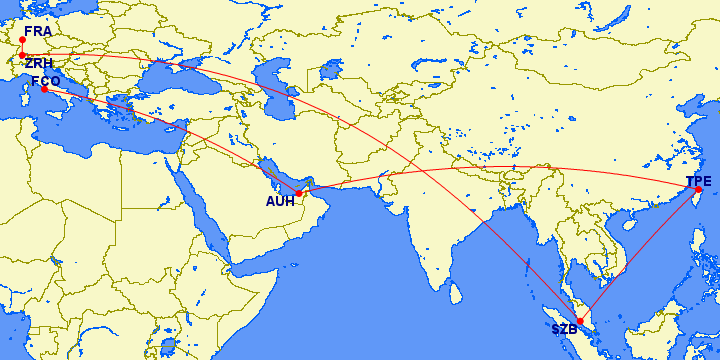 747SP: 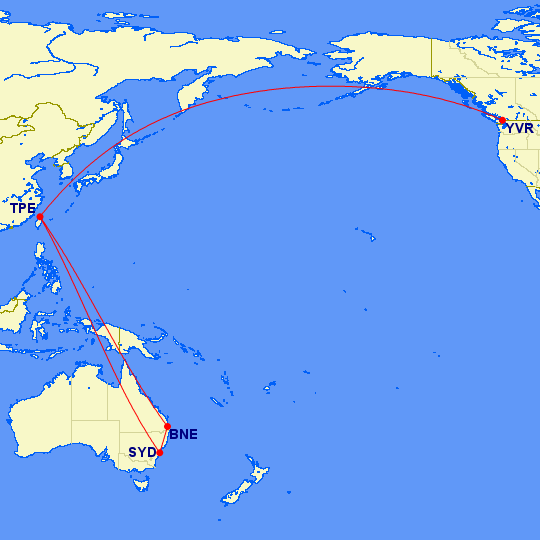 747-400: 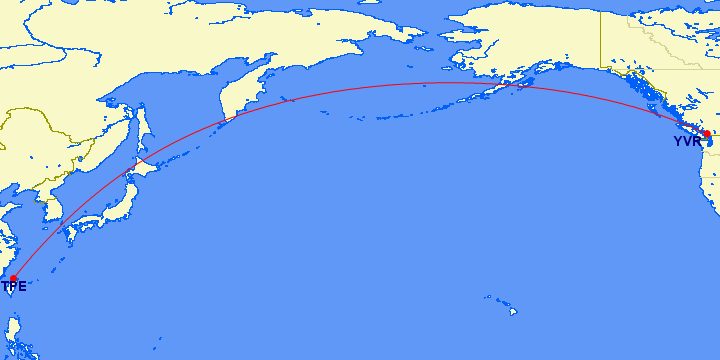 Mandarin Airlines 1998 Version 2 Flightplans here Mandarin Airlines 1998 Version 2 Flightplans here |
|
|
|
Post by chasensfo on Feb 9, 2018 21:49:08 GMT -5
//U-Land Airlines 1998 U-Land Airlines (1997-2000) IATA: WI ICAO: ULA CALLSIGN: U-LAND U-Land was a short-lived Taiwanese MD-80 operator who had the designation of being the first Low-Cost-Carrier in Asia, while oddly enough being owned by Swiss interests. The airline operated a few domestic routes with high frequency in most large domestic markets and initially found success. The first route, TSA-KHH, was initially sold for just NT$1, and continued to significantly undercut the prices of the established carriers afterwards. In addition to pioneering the low cost model in Asia, the airline also was innovative in in-flight entertainment being among the first to offer seat back LCD screens and the first airline to show a moving flight map in the cabin. The airline rapidly expanded by purchasing controlling interests in Vietnam Pacific Airlines and Filipino carrier Air Philippines, operating MD-80s in the basic U-Land livery for both carriers. Despite the initial accomplishments, U-Land quickly fell victim to the Asian Financial crisis of 1997 and also began running into issues over flight safety and the airline was gone by the year 2000, but Air Philippines would live on to become PAL Express and Vietnam Pacific Airlines would become Jetstar Pacific. The AIA MD-80 has been painted into 2 variations on Avsim as "ula88899.zip" and "ula88989.zip". MD-80: 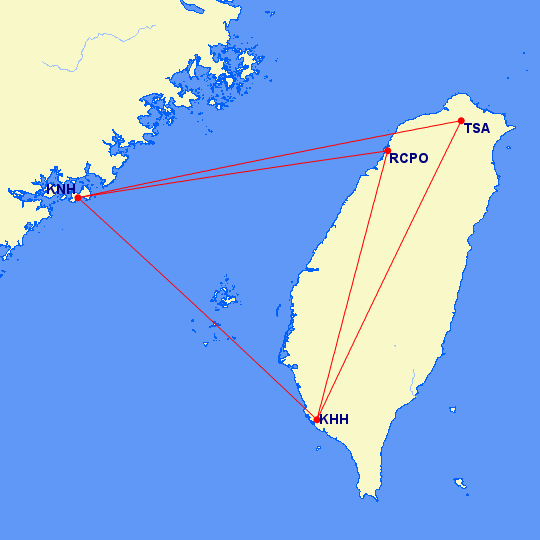 U Land Airlines 1998 Flightplans here U Land Airlines 1998 Flightplans here |
|
|
|
Post by chasensfo on Feb 9, 2018 22:02:17 GMT -5
//Grand Air(Philippines) 1998 v2 (Re-numbered aircraft for better AI parking, changed cruise speeds, added numerous charters, added 2nd A300) Grand Air (1995-1999) IATA: 8L ICAO: GDI CALLSIGN: DANTE SANTOS Grand Air was one of the first products of the deregulation of the airline industry in the Philippines, initially offering international flights with A300B4s starting out as Grand International Airways in 1995. Grand Air had decided it would compete with Philippine Airlines with better service and elected not to be a low-fare airline. Flights were started with full-service and A300B4s with 28 Business Class seats and 232 economy seats, used for flights to Hong Kong (HKG) and on a busy MNL-CEB-DVO domestic route. The airline used the slogan "It's like flying international" to promote the full service, which Grand Air was confident was better than that offered by struggling Philippine Airlines at the time. To expand domestically, 737-200s were leased from Taiwanese Far Eastern Transport (FAT) with a capacity restriction due to the poor international safety rating of the Phillippines at the time. This policy worked out well for Grand Air, as the airline was told it could only install 120 seats maximum in its 737-200s. In addition to the better service, Grand Air also had a relatively spacious cabin for short-haul flights. Initially, the airline was successful, and service expanded both domestically and internationally with flights added to Seoul (GMP) and Singapore (SIN) and briefly added a flight to HKG routed through Subic Bay (SFS). By 1998, the Philippines and most of Asia was in the midst of an economic crisis and the airline was down to just 2 A300B4s (flying MNL-HKG and MNL-CRK-HKG-CRK-MNL as well as charters) and 4 737-200s and stopped all operations in 1999. One 737-200 sat stored in TPE well into the 2000s, and at least one of the 737-200s sits stored in Clark(CRK) today in full Grand Air colors today. I have added numerous charters, as the pair of A300s did a lot of charter flying in the end while Philippine Airlines had most flights suspended. Charter flights are mostly to HKG connecting MNL via SFS, Davao (DVO), or Cebu (CEB) as well as a MNL-CRK-SIN route and some MNL-SIN non-stops. Like real life, the flights operate at sporadic and always changing times. Miguel Ceballos has painted the FAIB 737-200 here: drive.google.com/drive/folders/1GXkjRJhiAKWAGHuGXqKgdHB1FCGoyHln?usp=sharing737-200:  A300B4: 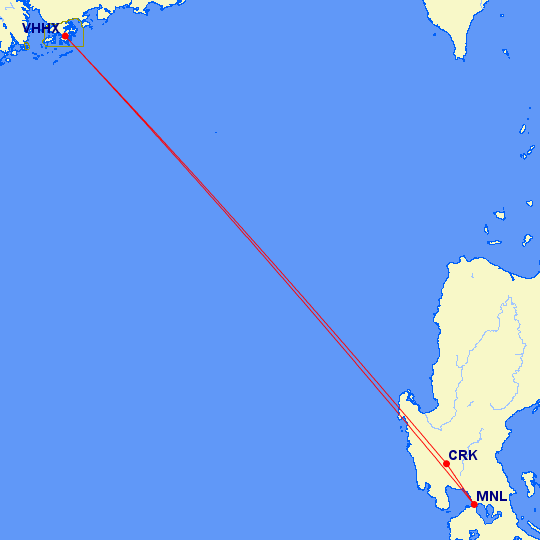 A300B4 Charters:  Grand Air 1998 v2 flightplans here Grand Air 1998 v2 flightplans here |
|
|
|
Post by chasensfo on Feb 13, 2018 13:46:04 GMT -5
//Cathay Pacific 1998 v2 (Removed L-1011\A340-200, re-ordered aircraft for better parking assignments) Cathay Pacific (1946 - Present) IATA: CX ICAO: CPA CALLSIGN: CATHAY Cathay Pacific has long been Hong Kong's national airline, established in 1946 after WWII, and was a global carrier earlier than most Asian airlines. 1998 was the last year of Cathay's Kai Tak (VHHX) hub, which closed in July 1998 along with the airport relocating to the new Hong Kong Airport (VHHH). Cathay was also in the middle of a livery change, having dropped the green striped and tailed livery in favor of the white livery with the feather logo used until 2015, and had just recently re-registered the fleet from the "VR-" Hong Kong registration prefix to "B-" in line with China after the hand over from the British to the Chinese of the Island. Cathay still had some 747s in the green-tail livery of the 70s and 80s, but most of the fleet had been painted, and the green "Hong Kong 1997" 747-200 was active and flying though the 747-200 fleet was dwindling and didn't fly much. Some 747-300s were also still active, but most long haul routes were operated by 747-400s while A340-300s, A330-300s, 777-200s, and some brand new 777-300(non ER's) operated a mix of short/medium haul and long haul flights. Being as Hong Kong is a relatively small island, many of Cathay's routes include stops en-route in order to serve more cities. These include A340 flights from ZRH-MAN and 747-400 flights from AMS-MAN. The A340-200s had a very short life with Cathay and were retired by 1997 along with the last L-1011. While obviously this carrier is going to make Kai Tak a bustling hub, it also adds decent traffic to TPE, where Cathay had a large focus city flying to places like GMP, MNL, and points in Japan. Cathay Pacific would continue to grow into a massive carrier and an important member of the Oneworld alliance. Ranmori has painted the entire fleet including the A340-200 and L-1011 as a bonus. The Avsim plans include these aircraft, but I since updated the plans as they were missing some stop over flights and elected to delete these aircraft in favor of sticking to 1998\1999. 777-200: 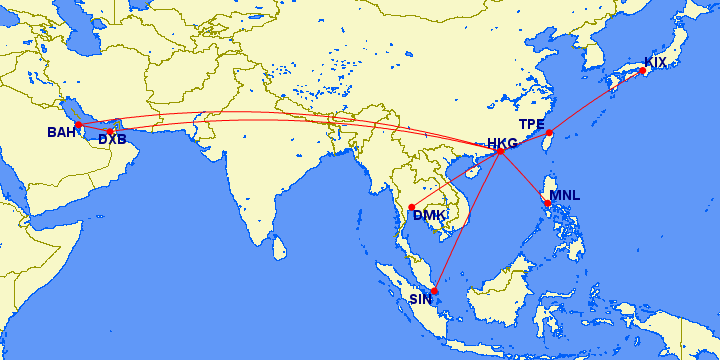 777-300:  A330-300:  A340-300: 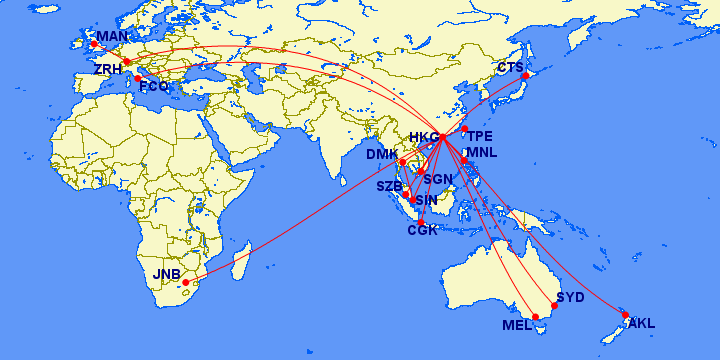 747-200: 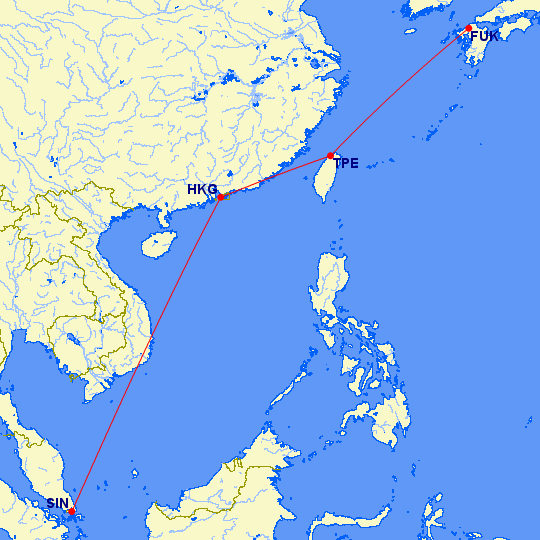 747-300: 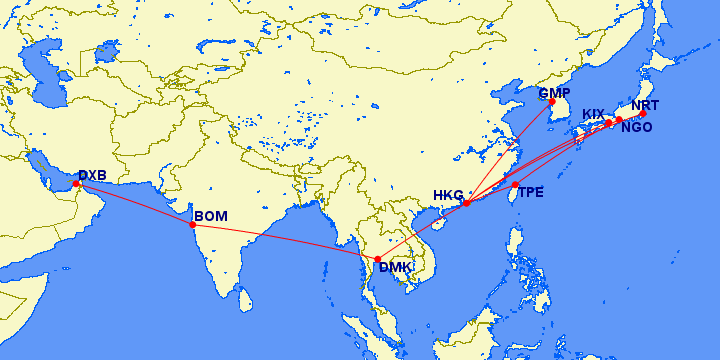 747-400:  Cathay Pacific 1998 Version 2 Flightplans here Cathay Pacific 1998 Version 2 Flightplans here |
|
|
|
Post by chasensfo on Feb 13, 2018 14:07:37 GMT -5
\\Dragonair 1998 v3 (Changed airports to reflect now closed\commercial inactive airports that were used at the time) Dragonair (1985-2020) IATA: KA ICAO: HDA CALLSIGN: DRAGON Dragonair was was Hong Kong's "other" airline, fully owned by Cathay Pacific and used for all CX's mainland China operations. Dragonair was actually founded in 1985 as an independent airline with 737-200s, but Cathay Pacific quickly recognized the opportunity for partnership and expansion into smaller markets in China. Dragon Air grew it's fleet over the years to add L-1011s for flights to mainland China, as at the time China did not allow carriers who served Taipei(TPE) to serve mainland China, so Dragonair's L-1011s allowed Cathay to bring passengers in on Cathay from TPE and connect them onwards to China with Dragonair. Hong Kong's popularity as a connecting hub between China and Taiwan grew, and soon Dragonair was modernizing the fleet with A320s and A330s and serving most large commercial airports in Eastern China. By 1998, Dragonair had also expanded into Japan and other parts of Asia like Cambodia and parts of Thailand on routes where Cathay's widebody jets were inefficient. The L-1011s and 737s were gone by 1998, and most flights were operated by the large A320 fleet with the A330s served the highest density routes like Shanghai(SHA) and Beijing(PEK) as well as a route to Kaohsiung(KHH). All routes begin and end in Hong Kong, so Kai Tak is the place to see these aircraft in action. Dragonair would continue flying in the same basic livery used in the 1990s until 2016 when the airline was re-branded as "Cathay Dragon" and the Dragonair colors started to disappear. Cathay Dragon ran into huge problems when social issues between China and Hong Kong lead to a huge drop in demand in 2019, leading the carrier to begin to park aircraft. Then by the end of the year, the COVID-19 pandemic, centered in China, cancelled all flights. In late 2020, Cathay Pacific announced that it would retire the Cathay Dragon brand and instead serve China with it's own aircraft. Ranmori Scythe has painted the entire fleet with several livery variations as the aircraft appeared in 1998 here (ignore the old flightplans): library.avsim.net/search.php?SearchTerm=airlines_of_hong_kong_1998.zip&CatID=root&Go=SearchA320: 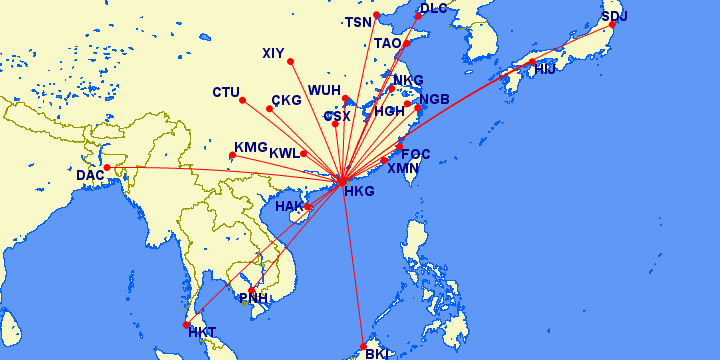 A330-300:  Dragonair 1998 v2 Flightplans here Dragonair 1998 v2 Flightplans here |
|
|
|
Post by chasensfo on Feb 13, 2018 14:51:37 GMT -5
//Transasia Airways 1998 v2 (changed aircraft order for better parking, changed speeds, added VHHX ferry flights) Transasia Airways (1951-2016) IATA: GE ICAO: TNA CALLSIGN: TRANSASIA Transasia began flying in Taiwan in 1951 as Foshing Airlines(unrelated to the carrier of the same name in 1998), failed in 1958. However, the company itself did not go away, and instead continued to operate as a travel agency. In 1966, the company expanded into aircraft cratering, and in 1983 it became Transasia with the intent to resume airline flights, which finally happened in 1988. By 1991, ATRs were used to expand into several international markets including the Philippines, Cambodia, Myanmar, Vietnam, Indonesia and Thailand. By 1998, all of these countries were dropped the intent was mostly doing domestic flights while connecting passengers onward to Macau(MFM) which had high frequency service throughout the day. Other than Macau, Malaysia was the only other nation still served by Transasia at the time. From the mid 1990s onward, Transasia built a sizeable fleet of A320s and A321s, but these aircraft mostly stuck to busy domestic routes and flights to MFM. Unlike most carriers who only served the domestic airport in Taipei(TSA) with domestic flights, Transasia had regular domestic ops out of TPE as well a few times per day. KHH was a large hub for the airline as well, seeing the most flights behind TSA. The fleet all wore the same livery, which had small black titles and no purple ribbon. This livery would eventually be replaced with the purple titles livery late in the life of the airline. Transasia sometimes did heavy maintenance checks for their fleet with HAECO at Hong Kong's Kai Tak Airport(VHHX), so I have added ferry flights for an A320 and A321 which mostly sit idle to make a trip down to Kai Tak and sit on the HAECO ramp for a few days each. Transasia would go on to expand again internationally in the next decade, even adding A330s to the fleet, and would also add cargo flights. However, By 2015, Transasia had already lost 4 of it's small fleet of ATRs to fatal accidents in 20 years, with the last 2 occurring not even 6 months apart with large loss of life and pilot error to blame. The fall out from those accidents(which were both deemed entirely preventable) and pressure on authorities to clean up the relatively troubled Taiwanese aviation industry lead to Transasia being shut down entirely in 2016 after beating the odds for many decades. The following repaints are completed: OSP ATR-42-300 by RAI user : m.box.com/shared_item/https%3A%2F%2Fapp.box.com%2Fs%2Fwje9rr2jxuios0orwetzxcvlqc21u57t/view/252776351163OSP ATR-72-200 (non HD) by RAI user : m.box.com/shared_item/https%3A%2F%2Fapp.box.com%2Fs%2Fwje9rr2jxuios0orwetzxcvlqc21u57t/view/252778430777OSP ATR-72-500(HD) NOTE: They flew the -200 in 1998 but here is this -500 if you wish to use an HD paint: www.juergenbaumbusch.de/?p=5636A320: www.juergenbaumbusch.de/?p=5626A321: www.juergenbaumbusch.de/?p=5629A321: 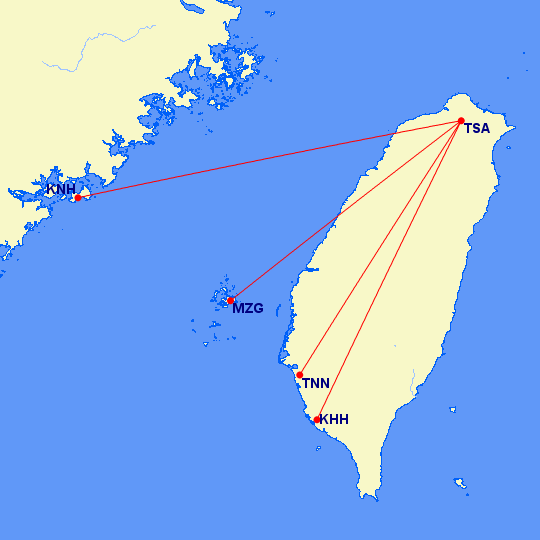 A320:  A321\A320 HAECO Ferry Flights: 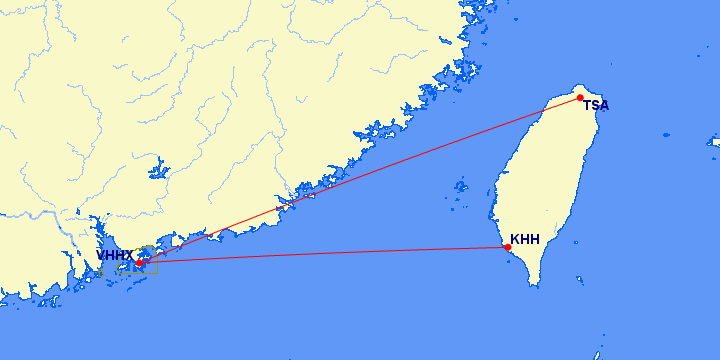 ATR-42\72:  Transasia Airways 1998 flightplans here Transasia Airways 1998 flightplans here |
|
|
|
Post by chasensfo on Feb 13, 2018 15:52:53 GMT -5
\\JAL Express - JEX 1998 JAL Express - JEX (1998-2014) IATA: JC ICAO: JEX CALLSIGN: JANEX JAL Express, better known as JEX, was established as a cost-cutting measure by Japan Air LInes(JAL) to compete with JAS and ANK on domestic routes where JAL's full-service and high-cost structure were deemed inefficient. JEX began flying in 1998, using foreign contract pilots and short-term contract flight attendants called "Sky Cast", who also cleaned the aircraft between turns. Initially, the airline was based in Osaka-Itami(ITM) with 2 737-400s flying to Miyazaki(KMI) and Kagoshima(KOJ) several times each daily. Thus, the aircraft are best spotted between flights in ITM. JEX was expanded and by 2000, the airline had already carried 1 million passengers in just 1.5 years. After the merger with JAS, MD-80s and MD-87s were added to the fleet and the airline would continue to grow adding next generation 737-800s until the fleet reached a size of about 50 aircraft in modern times and began international operations from 2009. The following year in 2010, JEX was the first Japanese airline to upgrade one of it's female pilots to Captain. In 2011, JEX flights began to operate under JAL's "JL" code instead of their own JC code, and the airline was fully merged into JAL in 2014. The FAIB 737-400 was done by Ranmori Scythe along with the flightplans here: library.avsim.net/search.php?SearchTerm=jex+1998&CatID=root&Go=Search JAL Express JEX 1998 Flightplans here JAL Express JEX 1998 Flightplans here |
|
|
|
Post by chasensfo on Feb 13, 2018 16:24:47 GMT -5
//Pacific East Asia Cargo 1998 Pacific East Asia Cargo (1990 - Present) IATA: 4P ICAO: PEC (or use "TNT" for parking as well) CALLSIGN: PAC-EAST CARGO Pacific East Asia Cargo was TNT Cargo's Philippines division, operating a pair of Bae-146's to HKG, GMP, and TPE and a 727 to SIN. Initially, flights were started with a 737-200 operated by French carrier Euralair which served the MNL-SIN route, but this was replaced with a 727-200 leased from Kitty Hawk AirCargo by 1998. These are representative plans from what info I could gather from local sources, I created banks where flights generally depart around the same time in the morning, spend most of the day abroad, and come back full of cargo in the evening again arriving around the same time, and the aircraft only operated from Monday to Friday spending weekends parked in Manila.. The destinations and general flight times are real. As there were occasional daylight flights weekends during the busy season, I opted for later departures and short turns abroad to have the aircraft come and go in daylight but also spending most of the day in MNL. The Bae-146's provide nice variety to Kai Tak, though they only operate their cargo runs at night. The airline is alive and well today. The Bae-146-200(and the -300) has been painted by RetroAI user Alex\funk and may be found here: app.box.com/v/7funk/file/15819959253I will paint the 727 eventually. 727-200F: 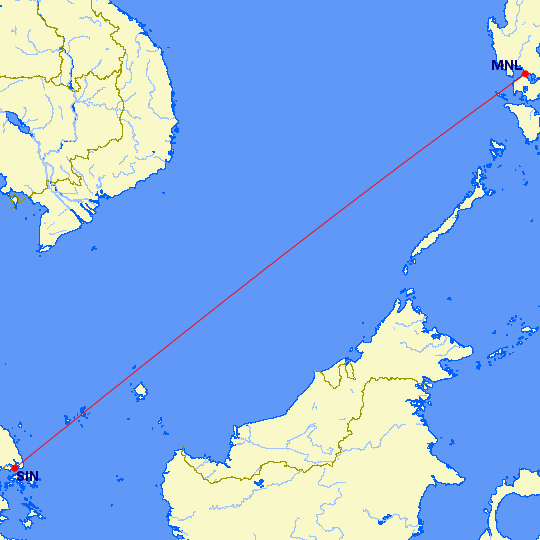 Bae-146-200F: 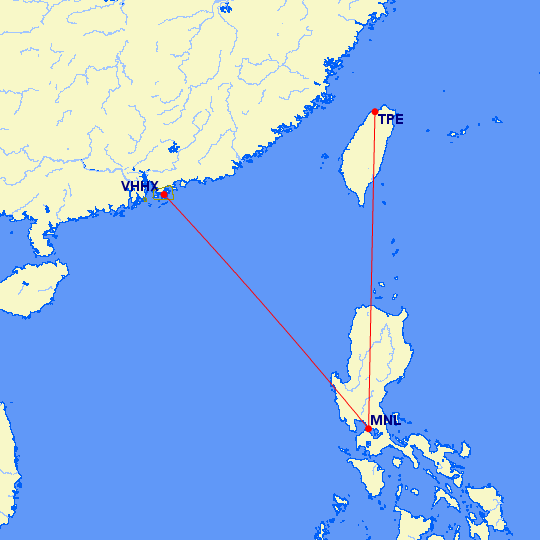 Pacific East Asia Cargo 1998 Flightplans here Pacific East Asia Cargo 1998 Flightplans here |
|
|
|
Post by chasensfo on Feb 15, 2018 15:50:47 GMT -5
//Cebu Pacific 1998 v3 (UPDATED 15FEB22; added various TPE charters to aircraft with large downtime, changed RPVB to RPVX). Cebu Pacific (1996 - Present) IATA: 5J ICAO: CEB CALLSIGN: CEBU Cebu Pacific, a Filipino low-cost carrier based Cebu (CEB) but operationally based in Manila (MNL), was another product of the 1995 airline deregulation in the Philippines which spawned the first private scheduled jet airlines of the Philippines. Though flights did not operate until 1996, the airline was founded in 1988 and got authorization to operate in 1991, though the actual operation would be delayed until after the 1995 deregulation of the Filipino airline industry. Flights began with a small fleet of DC-9-30s operating between MNL CEB, and Davao (DVO) initially, the carrier started with just 24 daily flights. While all new entrants to the Filipino airline industry like Grand Air and Air Philippines were utilizing low fares, Cebu Pacific decided that rather than compete with service, they would compete by making their own "fun" brand. Flight attendants told jokes, played trivia games for prizes in flight, and created a laid-back and casual atmosphere in the cabin which became quickly popular with Filipino travelers. Over the next 2 years, more DC-9-30s were added and the carrier began service to Ilo Ilo (ILO), Tacloban (TAC), Kalibo (KLO), Bacolod (BCD), and Cagayan de Oro (CGY), bringing the total domestic destinations from 3 to 8. In 1998, 3 of the airline's DC-9s wore colorful special liveries, a nod to the "jeepneys" of the Philippines which are privately owned public buses that are decorated and painted uniquely by the owners to represent the vibrancy of the nation. In February of 1998, RP-C1507 was sadly lost while operating flight 387 on a service from MNL to CGY. Due to another DC-9 being broken in TAC, the flight made an unscheduled stop en route to deliver an aircraft tire for the stranded company airplane. As TAC-CGY was an unfamiliar route to the crew which took the aircraft through steep terrain on an Eastern approach into CGY, the pilots relied on their charts to judge the height of the terrain below which was shrouded in fog. Unfortunately, the company provided charts listing the peak of Mt. Sumagaya at 5,000 feet above sea level when it was actually at 6,000 feet, which is roughly the altitude at which the aircraft attempted to clear the mountain. The aircraft hit the very top of the mountain at high speed killing all 104 onboard, and the resulting investigation saw the carrier grounded for several weeks due to training and navigation discrepancies. Luckily for Cebu Pacific, the Asian economic crisis and a pilot strike at Philippine Airlines saw that carrier almost entirely grounded by the summer of 1998, while competitor Grand Air also ran into big financial trouble and cut many of its scheduled flights, instead of focusing on charters. This allowed Cebu Pacific to enjoy much less competition on its domestic routes than before and even allowed the carrier to seek approval for a series of international summer charters to Taipei (TPE) via several airports including Subic Bay (SFS). Grand Air failed soon after and Philippine Airlines resumed service with a much smaller domestic network, which allowed Cebu Pacific to add Boeing 757s to the fleet in 2000 and open another 10 domestic destinations, bringing the total to 18, while also starting international flights to destinations such as Hong Kong (HKG). In 2005, the first of a huge order of Airbus A319 and A320 jets began to arrive, and the fleet of 3 757-200s and 18 DC-9-30s was retired in 2006. In 2008, Cebu Pacific started a regional subsidiary called Cebgo, operating prop aircraft such as ATR 72s on both passenger and cargo flights. Briefly, Cebgo even operated some A319 and A320s and had Filipino carrier SEAir operating Let 410s and Do328s on its behalf. Cebu Pacific has not had a serious accident in the 20 years since and is today the 2nd largest airline in the Philippines and one of Asia's largest low-cost carriers with a modern fleet of large aircraft including the A330NEO. The paints are all needed on the AIG model, but they have been done on the AIA DC-9-30 on Avsim here: library.avsim.net/search.php?SearchTerm=cebu_pacific_dc9-30_fleet.zip&CatID=root&Go=SearchDC-9-30: 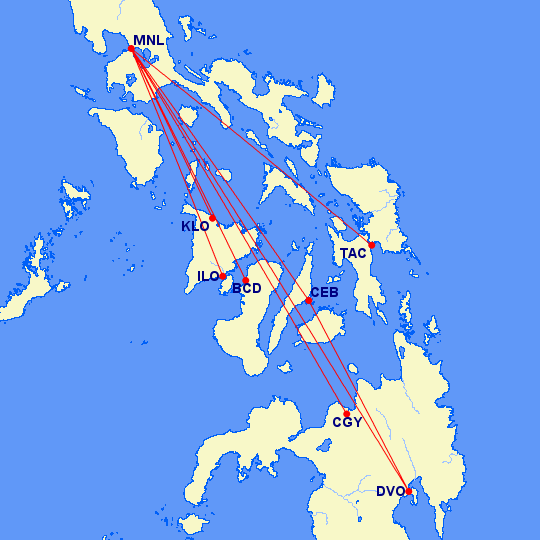 DC-9-30 Charters:  Cebu Pacific 1998 Version 3 Flightplans Here Cebu Pacific 1998 Version 3 Flightplans Here |
|
|
|
Post by chasensfo on Feb 15, 2018 16:57:33 GMT -5
\\Asiana Airlines 1998 v2 (Changed aircraft order for better parking) Asiana Airlines (1988 - Present) IATA: OZ ICAO: AAR CALLSIGN: ASIANA Asiana was founded in 1988 as a private international airline to compete with Korean Air who had a virtual monopoly on Korean air travel at the time. Asiana and Korean Air still had full control of the Korean domestic market in 1998 as South Korea's only 2 scheduled airlines, making them appear at the vast majority of Korean airports. While domestic competition was intense with Korean Air, Asiana decided to branch out and only competed with Korean Air on a few international markets, choosing to serve several Chinese cities that Korean Air didn't fly to and longhaul destinations like Istanbul(IST) and Tashkent(TAS). 737-500s were exiting the fleet, with only 3 remaining, and the first A321 had just come online. International routes were flown by 747-400 Combis or 767-300s, with several "tag on" routes onward from Seoul. Asiana served many commercial airports in Japan with 737-400s at the time, and is an important part of the Japanese traffic as well. The carrier had 2 737-500s and it's first A321 painted in a special "Experimental Color Scheme"(EC), and this is represented in the flightplans. One 737-500 also remained in a slightly different older livery dubbed as the "1994" colors, while the rest of the fleet had been modified to the "1998" colors. Asiana would continue to grow into a true global carrier, joining the Star Alliance and being one of the few A380 operators. As a BONUS, ranmori has painted the 747-400, 747-400M and 737-400 in the 1994 livery for use with those flightplans, though there is no use for them in these 1998 plans. Repaints included for the FAIB 737-400, 737-500, 767-300, 747-400, and A321. On Avsim as "asiana_1998". 737-400\500: 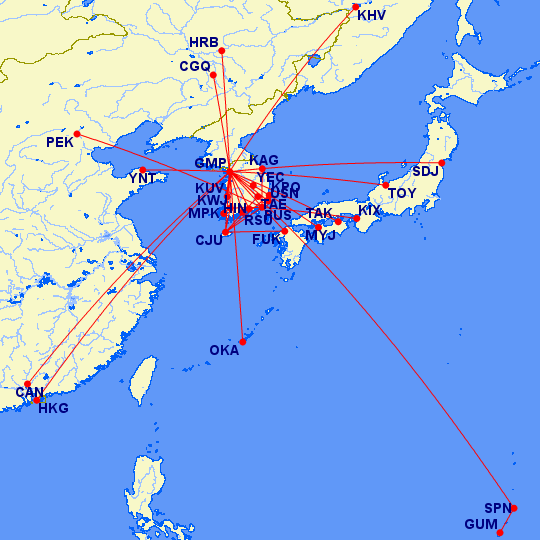 A321:  767-300:  747-400\M: 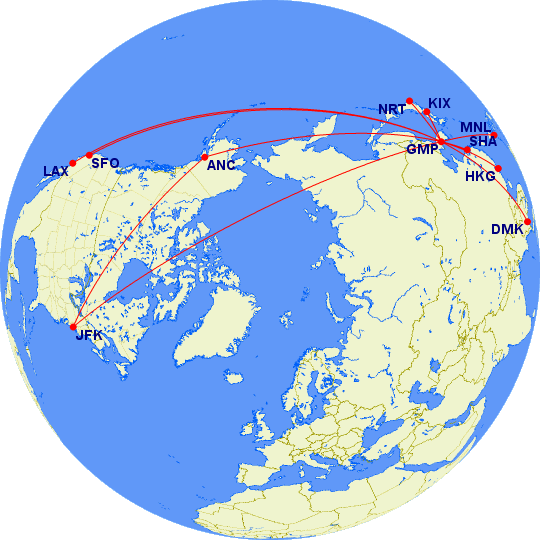 Asiana 1998 Flightplans here Asiana 1998 Flightplans here |
|
|
|
Post by chasensfo on Feb 15, 2018 18:28:28 GMT -5
//China Airlines 1998 v2 (09AUG22; updated AI cruise speeds to AIG standard, aircraft renumbered for better AI parking) China Airlines (1959 - Present) IATA: CI ICAO: CAL CALLSIGN: DYNASTY China Airlines is the national airline of the Republic of China, also known as Taiwan, based in Taipei(TPE). Between a poor safety record and political tension, China Airlines had a tough time for decades in one way or another. In 1997, Hong Kong was handed over from England to China, who view Taiwan as a separatist rouge state that they feel is rightfully part of China. Immediately, China announced that any aircraft with a Taiwanese flag on it would be banned from landing in Hong Kong. As China Airlines had a large focus city in Hong Kong flying various routes across Asia from it, the fleet was repainted in a frenzy from the old conservative colors to a new livery with a vibrant pink flower on the tail. By 1998, China Airlines had completely repainted the fleet into the 1995-introduced new livery as the company was under pressure to be able to use all aircraft at its large HKG hub. Furthermore, the Chinese government laid out restrictions as to the usage of Japanese airports used by mainland Chinese carriers that effectively banned China Airlines from these airports. The solution was the Japanese allowing China Airlines to be the only foreign carrier to operate at the then-densely congested Tokyo Haneda Airport(HND) while all other international carriers were forced to use the Narita Airport(NRT) which was far from the city of Tokyo itself. From HND, China Airlines offered flights on to Honolulu. The 737-400s were still very much active, but were very near the end of their lives with China Airlines retired by 1999 or so with the arrival of brand new 737-800s. China Airlines chose not to compete in the Taiwanese domestic market except for on the lucrative Kaohsiung(KHH) to Taipei route. China Airlines had a hub in KHH, and offered high frequency flights to Taipei's domestic airport, TSA, and a few TPE-KHH flights. These were the only flights the airline operated from the TSA airport. Only 2 747-200s were left, mostly flying to HND and HNL, and the A300-600R was the backbone of the fleet with a handful of A300B4s still flying. The 747SPs all were at Mandarin by now At this time, but one 747SP route was operated from TPE-HNL with aircraft in the Mandarin livery but China Airlines flight numbers and callsigns. Mandarin aircraft often subbed for China Airlines 747-400s and MD-11s using the "DYNASTY" callsign. I have included an MD-11 in Mandarin colors operating China Airlines flights, I recommend you make a separate aircraft.cfg entry for the Mandarin MD-11 and 747SP aircraft with the "DYNASTY" callsign and "CAL" parking code for realism. The 747-400s did some flights to Southeast Asia, but mostly flew the high-density HKG-TPE route and flights to the USA. Between it's start and 2002, the carrier was plagued with high-profile fatal accidents and had an abysmal safety rating. By 1998, the airline had already suffered 10 fatal accidents, many of which killed large numbers of people, and had lost several more aircraft in serious accidents with no fatalities. China Airlines would lose an A300 landing in TPE in 1998 with the loss of all 196 souls on board plus 7 people on the ground and would lose an MD-11 landing at the new Hong Kong airport in 1999 killing 3 passengers. In 2002, one of the last 747-200s in the fleet suffered an in-flight break-up flying from HKG-TPE killing all 225 people on board. It wasn't until after a ground explosion of a 737-800 in OKA in 2007 that these frequent hull losses finally stopped occurring. Thankfully, today China Airlines is a safe and modern airline and an important member of the Sky Team Alliance. Though the 1998 schedule used did not contain the first 737-800 yet, extra 737-400s generated from the flightplans were assigned to the first 737-800s to join the fleet. Ranmori Scythe has painted the entire fleet here: library.avsim.net/search.php?SearchTerm=china_airlines_1998.zip&CatID=root&Go=Search737-400: 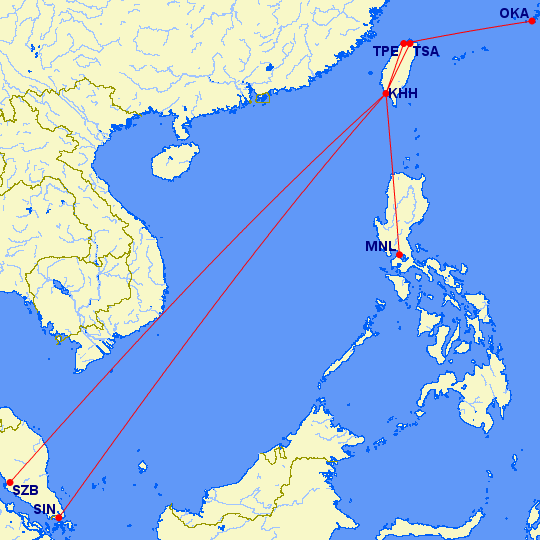 A300: 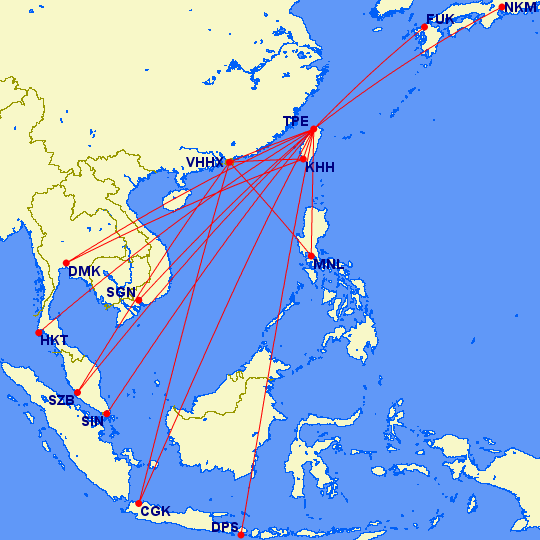 MD-11 (most flights operated by Mandarin Air):  747SP operated by Mandarin Air: 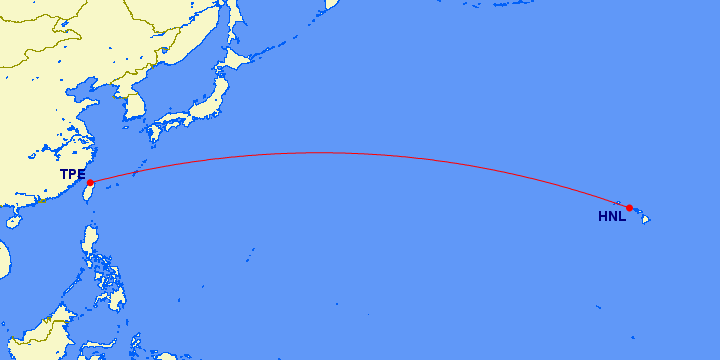 747-200:  747-400:  China Airlines 1998 v2 Flightplans here China Airlines 1998 v2 Flightplans here
|
|




























